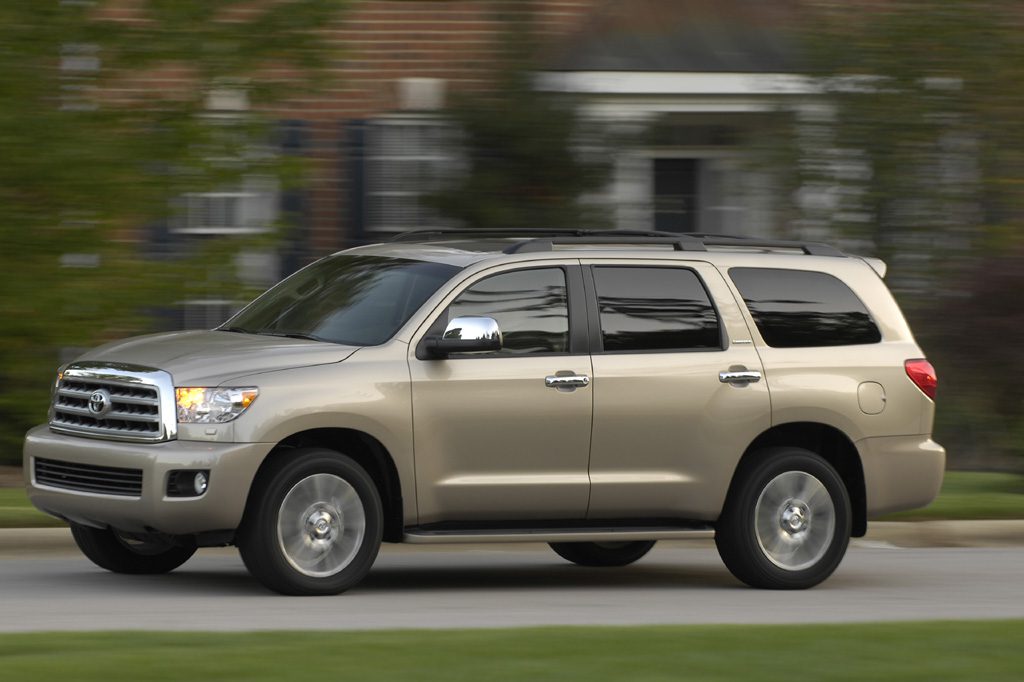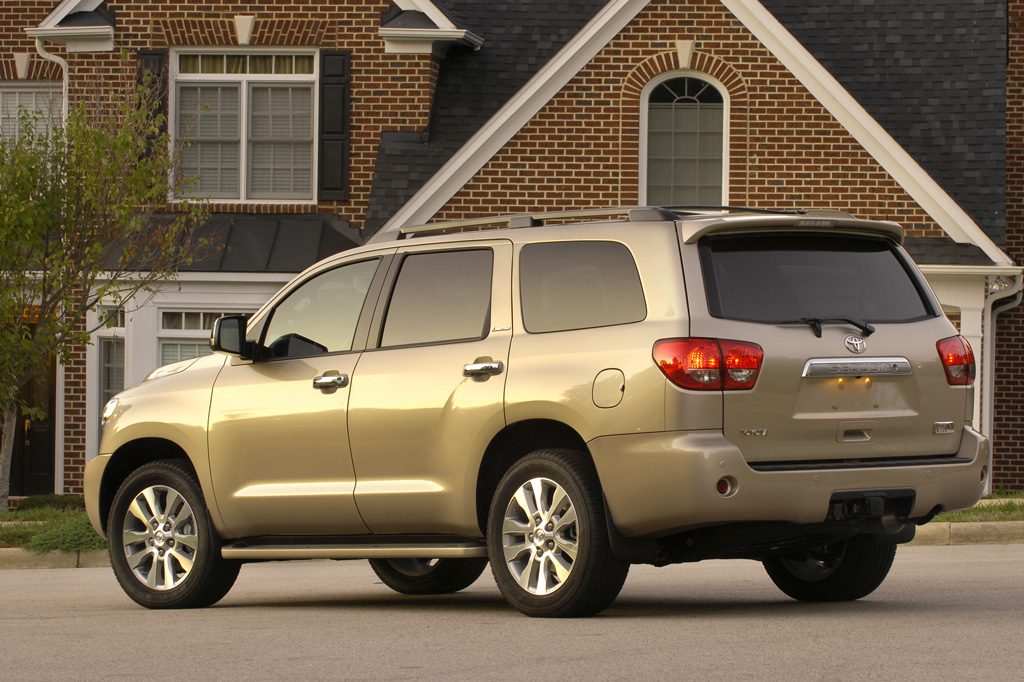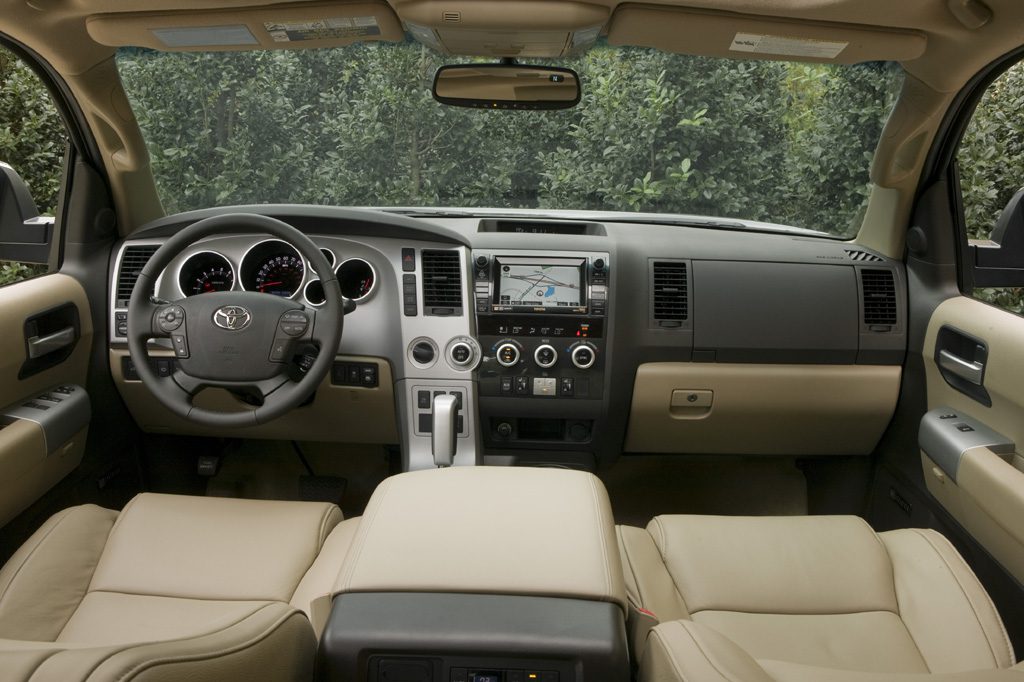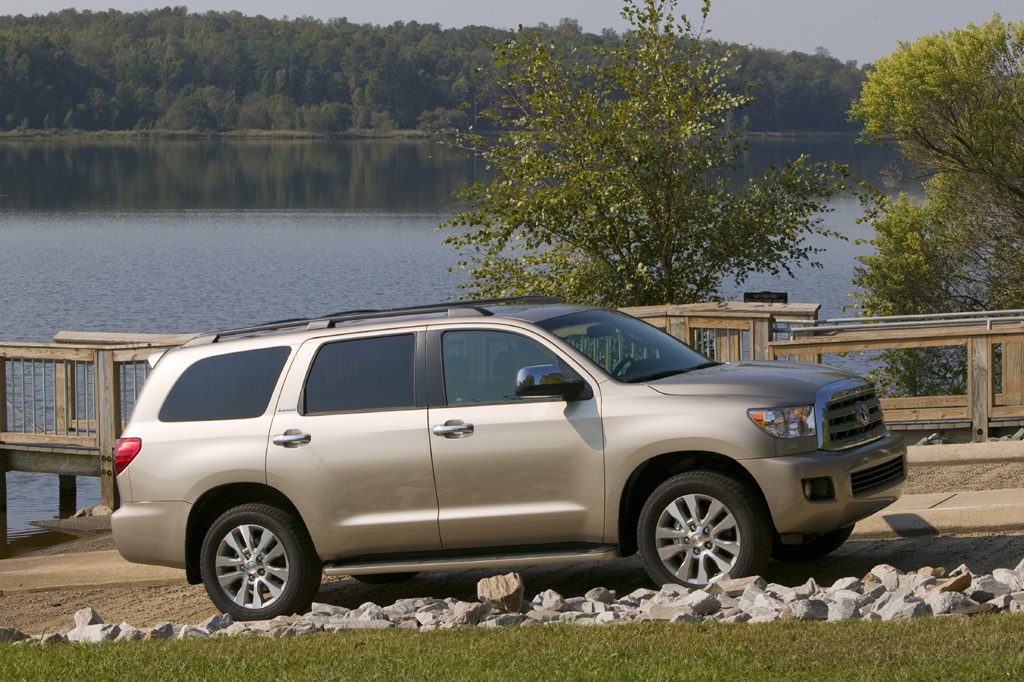| Large SUV; Built in USA |
|
|
| Good condition price range: $10,300 – $45,900* |

2009 Toyota Sequoia Front

2009 Toyota Sequoia Rear

2009 Toyota Sequoia Interior

2009 Toyota Sequois Profile
| Pros: |
|
| Cons: |
|
No longer at a disadvantage in power or towing ability, the Sequoia more than holds its own against most rivals in every measure, except for dashboard convenience and cargo space behind the third-row seat. Even those demerits are softened by an otherwise inviting cabin, along with overall size that makes close-quarters maneuvering easier than with most vehicles in this class.
Overview
Redesigned for the 2008 model year, Toyota’s Sequoia gained new styling and features along with more available power, without growing much larger. Sequoia was based on the chassis of Toyota’s big Tundra pickup truck. Though it shared Tundra’s powertrains, the Sequoia got an independent rear suspension that made possible a lower floor and more legroom for its third-row seat. Compared to the 2001-2007 Sequoia, the 2008 model was just 1.2 inches longer and about an inch taller and wider. However, its wheelbase (distance between front and rear axles) rose 3.9 inches. Most of that expansion went to added passenger space; cargo volume actually shrunk by 8.1 cubic feet.
SR5 and Limited models returned, joined for 2008 by a top-line Platinum model. The SR5 and Limited came with a 276-horsepower 4.7-liter V8 and a five-speed automatic transmission. Optional for those two and standard on the Platinum edition was a 381-hp 5.7-liter V8 that worked with a six-speed automatic.
Sequoias came with rear-wheel drive or four-wheel drive, which could be left engaged on dry pavement and included low-range gearing. Seating for eight was standard on the SR5 and Limited. Replacing the second-row bench with two bucket seats and a console created seating for seven, which was standard in the Platinum and optional for the Limited. Standard safety features included antilock brakes, traction control, an antiskid system, curtain side airbags with rollover deployment that covered all seating rows, and front side airbags. All Sequoias had a tilt/telescoping steering column and three-zone climate control. Standard or optional, depending on model, were a power-folding third-row seat, adjustable air suspension, navigation and DVD entertainment systems, rearview camera, and adaptive cruise control. Sequoia competitors included the Chevrolet Tahoe, GMC Yukon, Ford Expedition, and Nissan Armada.
Yearly Updates
| 2009 Sequoia Toyota’s largest SUV was largely unchanged for the 2009 model year. In most states, four-wheel-drive Sequoias with the 5.7-liter V8 could now be equipped to run on either gasoline or E85 (an ethanol/gasoline blend). A new Sport Appearance Package for the SR5 edition with 5.7 V8 included 20-inch alloy wheels, a rear spoiler, and seven-passenger seating. |
| 2010 Sequoia The 2010 Toyota Sequoia received freshened styling and a new base engine. Newly standard on the SR5 was a 310-horsepower 4.6-liter V8 engine, which replaced a 276-horsepower 4.7-liter V8. |
| 2011 Sequoia The 2011 Toyota Sequoia sees no major changes. |
| 2012 Sequoia Trailer-sway control was now standard and blind-spot alert was now offered on the top-line Platinum trim level, but otherwise, there were no changes of note to the 2012 Toyota Sequoia. |
| 2013 Sequoia The 2013 Sequoia was available with a factory-installed rear Blu-ray entertainment system. All models were now equipped with the 5.7-liter V8. The 4.6-liter V8 that had been fitted to SR5 models was discontinued. |
| 2014 Sequoia The main change for the 2014 Sequoia was the addition of Toyota’s Entune infotainment system. Each trim level received a version of the system with varying levels of functionality. |
| 2015 Sequoia Other than receiving a sunroof and rearview camera as standard equipment, the Toyota Sequoia was unchanged for 2015. |
